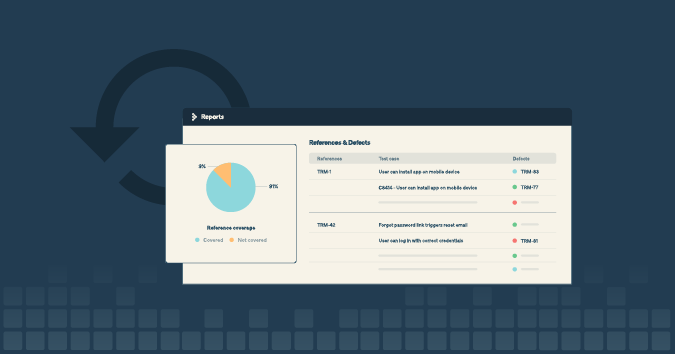This is a guest post by Raj Subrameyer
If you work in an agile environment, chances are you have heard the terms continuous testing and DevOps. Over the years, teams have realized the importance of finding defects earlier, and they have shifted testing left to ensure it begins right from the start of the development process and continues throughout the different phases of the delivery pipeline.
With rapid release cycles, collaboration has been the key to ensure successful product delivery. This has brought focus to DevOps, where development, testing, and operation teams all work together as one single unit.
The glue that binds DevOps and continuous testing together is a seamless CI/CD pipeline. Consequently, companies are frantically moving toward CI/CD integration, but they run into obstacles that hinder their progress.
Let’s look at five common mistakes organizations make during a CI/CD implementation, so you can avoid these traps successfully.
Confusion about what the terms mean
Teams are not always clear on what having a CI/CD pipeline means. They may not even be familiar with the distinction between the terms CI and CD, which is a cause for confusion.
Discuss these terms with everyone:
- Continuous integration: Continuously merging code into version control or the mainline branch several times a day
- Continuous delivery: Having different changes deployed to different non-production environments, with tests triggered automatically and confirmed to pass
Continuous deployment: Keeping your application deployable all the time, and possibly deploying your application multiple times a day, like Netflix, Amazon, Facebook, and other companies do
Having clarity around these terms helps teams understand what needs to happen and which tools to use during different parts of the implementation.
Automating the wrong processes
A majority of companies implement CI/CD from scratch or make the transition gradually to a fully automated CI/CD pipeline. Quite often, companies make the mistake of automating the wrong processes or automating processes that are lower in priority. Then, they complain that the CI/CD pipeline does not add value to them.
Before jumping into CI/CD, ask yourself these basic questions:
- What are the most time-consuming processes that are an obstacle to releasing faster?
- What are the different things that need to be automated? Which are the highest priority?
- What tests need to be created, and what needs to be run?
- How should we handle automatic deployment to non-prod and prod environments?
The answers will help you prioritize your automation and save a considerable amount of time.
Insufficient team collaboration
To successfully implement CI/CD, we need QA, DevOps, Developers, Infrastructure teams to collaborate. The problem comes when each of these roles starts working in silos and does not talk to each other, especially when working in a CI/CD environment.
Any obstacles to open communication have to be addressed immediately so that there is a free flow of information across different teams. At any instant, the team should have a clear idea of the goals, responsibilities, and expectations from each one of them.
Not tracking the right metrics the right way
A common trend in large organizations is to use different dashboards and metrics to measure progress. However, if there is no consistency across teams, it results in communication gaps and companies spending money on unnecessary tools and extra licenses. The data from one team may not make sense to another team.
This needs to stop. There should be a universal standard of metrics and dashboards followed across the company, so stakeholders and teams can know their CI/CD pipeline’s effectiveness. Although the teams may work on different features of the product, in the end, it is the entire product that the customers use. So, having common metrics and dashboards gives everyone a universal understanding of development progress and other related metrics.
Lack of sufficient tools and resources
Start-up and mid-size companies do not usually have the money and resources to invest in the tools needed to establish a CI/CD pipeline. Even if they do, they are unsure of what tools would fit their needs. There are a plethora of tools out there, and it gets confusing fast.
So, start small. Analyze what tools and resources are already available, and brainstorm ideas with the entire team. Come up with a plan to gradually shift to a fully integrated CI/CD pipeline that can enable you to push features multiple times a day.
Becoming aware of the common mistakes that can happen during a CI/CD implementation helps teams to be better prepared to overcome obstacles. The shift to CI/CD is not an easy one, but the return on investment outweighs the effort, time, and money spent on this transformation.



